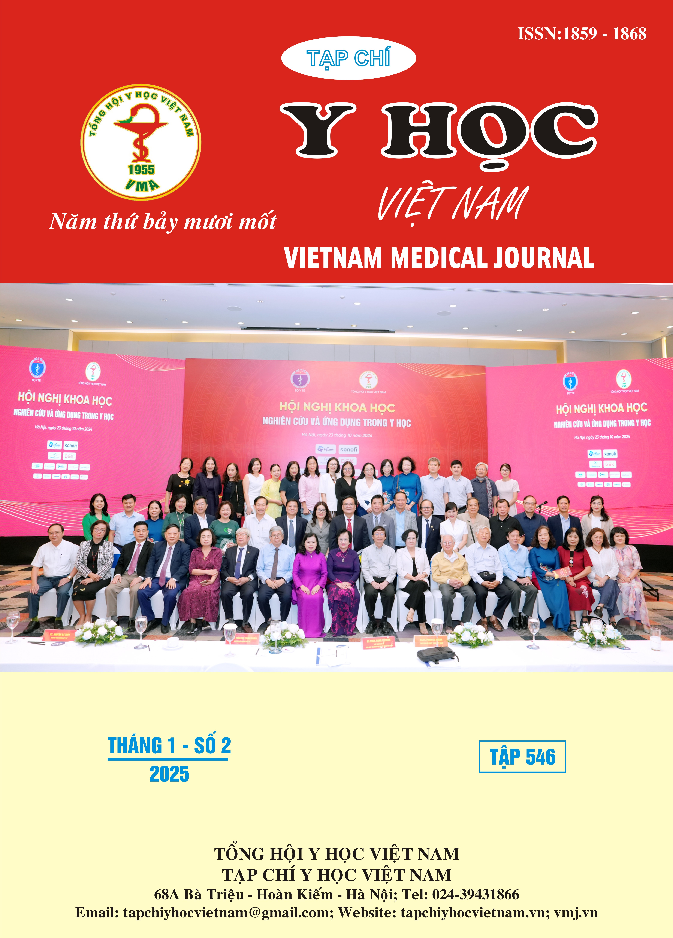RESULTS OF TREATMENT OF MILLER-FISHER SYNDROME BY PLASMA EXCHANGE
Main Article Content
Abstract
Objective: To evaluate the results of PEX in the treatment of Miller-Fisher Syndrome at the center for critical care medicine of Bach Mai Hospital from 08/2024 to 08/2024. Methods: A prospective, uncontrolled interventional longitudinal study. Results: A total of 22 patients diagnosed with MFS or overlapping MFS/GBS with a median age of 58, predominantly male (63.6%), underwent plasma exchange with a median of 5 sessions (ranging from 3 to 5 sessions). Most patients showed no improvement in ocular motor muscle strength following PEX. However, 59.1% and 86.3% of patients achieved full recovery from ophthalmoplegia at 4 and 8 weeks post-discharge, respectively. Upper and lower limb muscle strength improved immediately following PEX in FS/GBS patients. After PEX, Hughes scores decreased by 1 point in 10 patients (45.4%), by ≥2 points in 8 patients (36.3%), while 4 patients (18.2%)—all from the pure MFS group—showed no improvement. Conclusion: The patient has Miller Fisher syndrome, with a complete ophthalmoplegia recovery rate of 22.7% immediately after plasma exchange, and the recovery process continues post-exchange. After 8 weeks of discharge, 86.4% of patients fully recovered. The rate of improvement in disability scores according to the Hughes scale following plasma exchange reaches up to 81.8%.
Article Details
Keywords
Miller Fisher syndrome, plasma exchange.
References
2. Mori M el al. Clinical features and prognosis of Miller Fisher syndrome. Neurology. 2001;56(8): 1104-1106.
3. Mori M et al. Intravenous immunoglobulin therapy for Miller Fisher syndrome. Neurology. 2007;68(14):1144-1146.
4. Shahrizaila N, Lehmann HC, Kuwabara S. Guillain-Barré syndrome. The Lancet. 2021; 397(10280):1214-1228.
5. Funakoshi K et al. Clinical predictors of mechanical ventilation in Fisher/Guillain-Barre overlap syndrome. Journal of Neurology, Neurosurgery & Psychiatry. 2009;80(1):60-64.
6. Mori M, Kuwabara S, Yuki N. Fisher syndrome: clinical features, immunopathogenesis and management. Expert Review of Neurotherapeutics. 2012;12(1):39-51


